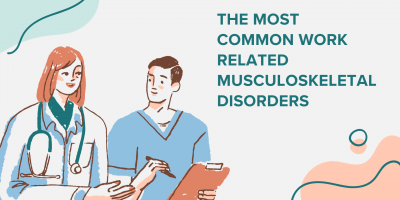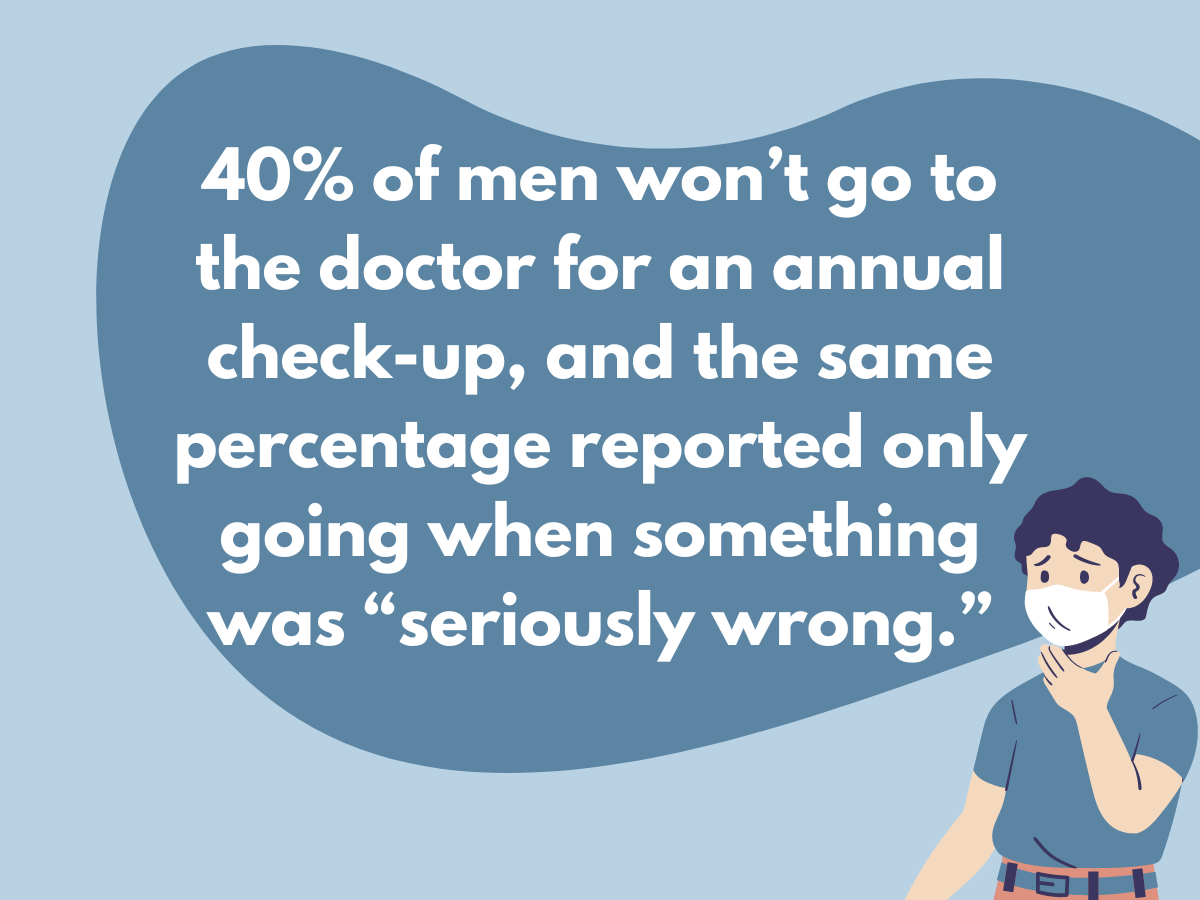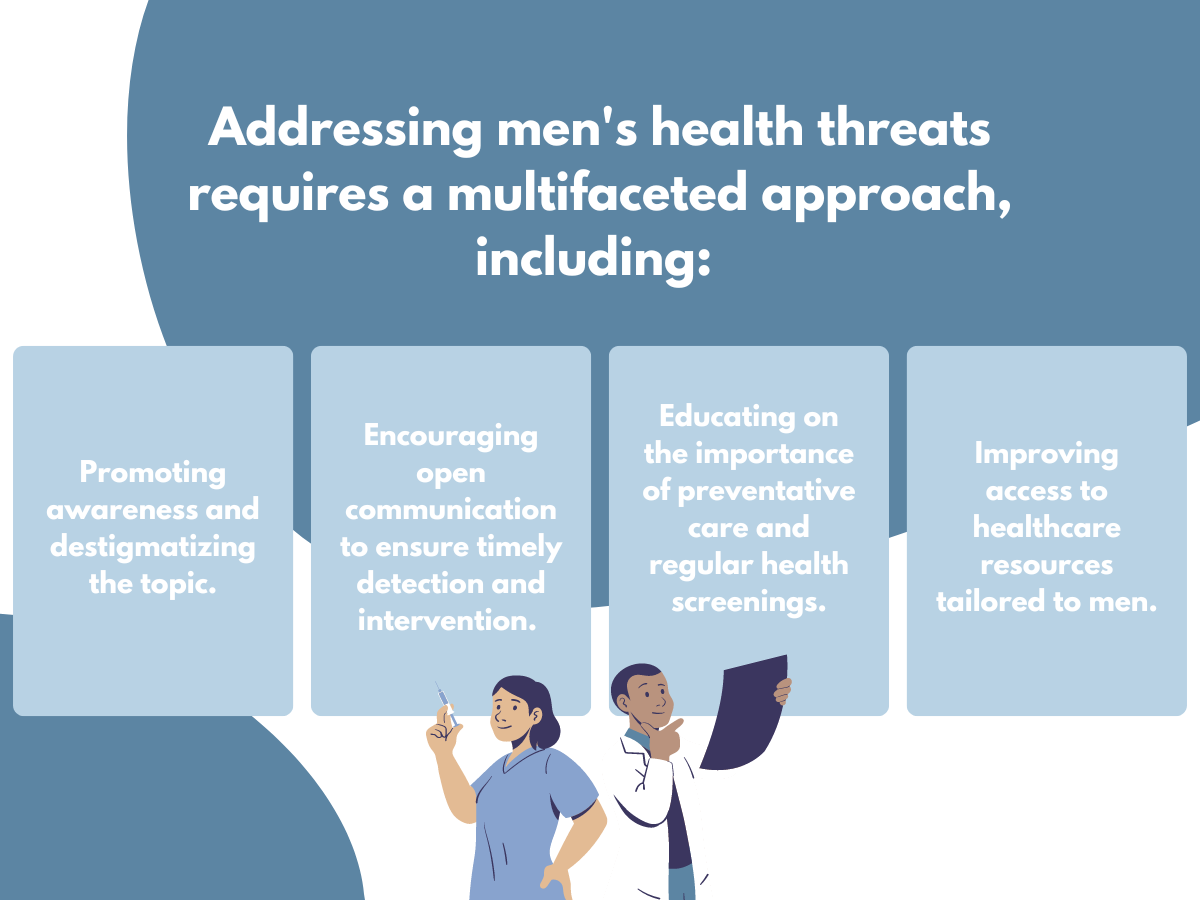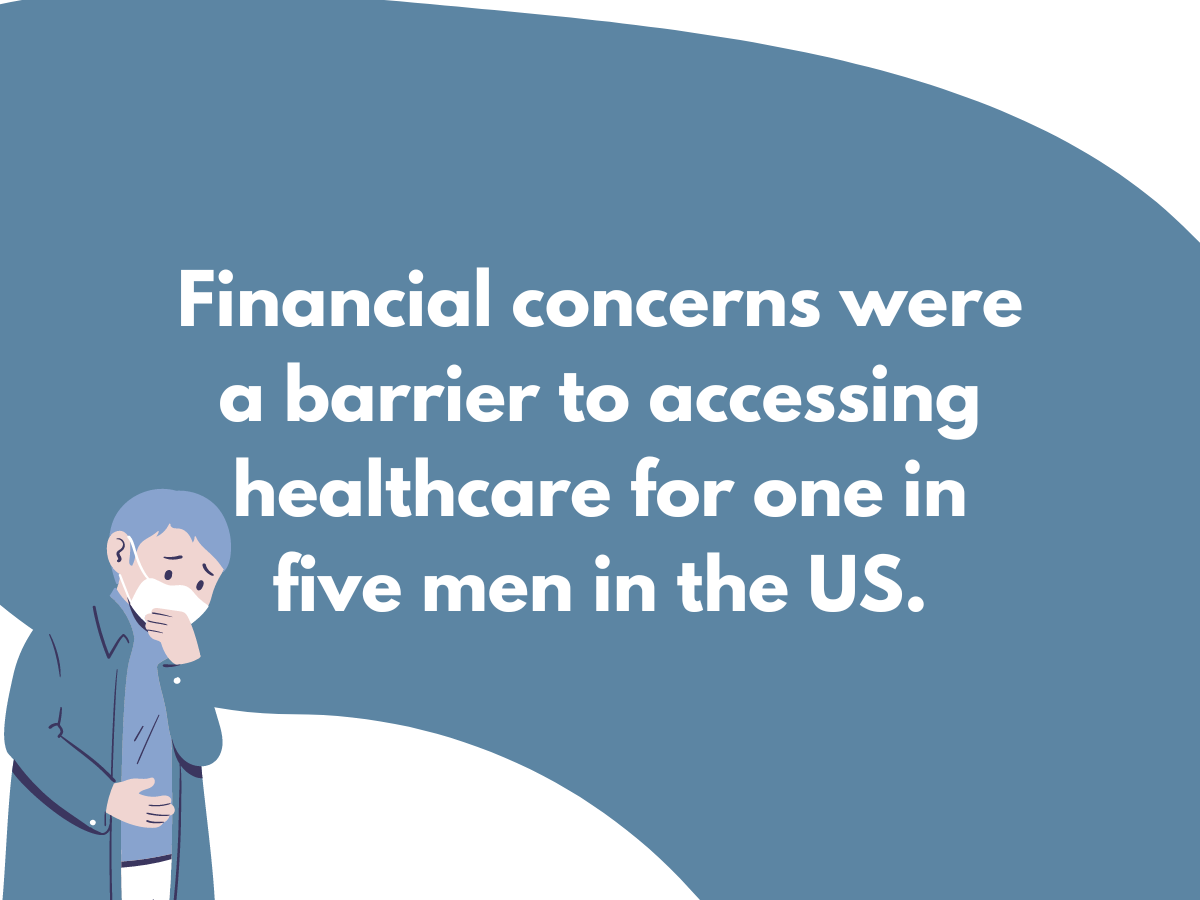
The Most Common Work-Related Musculoskeletal Disorders
Affecting billions, work-related musculoskeletal disorders are a major health concern. Understanding how and why they happen is the first line of defense in the workplace.

Men’s health is a fundamental yet overlooked aspect of well-being.
Despite a healthcare system that “favors” men, societal norms and stereotypes haven’t been too kind to them when it comes to seeking medical help. They discourage open conversation about health issues while reinforcing the idea that men should be stoic and self-reliant.
That might explain why, statistically, men are less likely than women to seek help or report their symptoms when dealing with health issues. In fact, 40% won’t go to the doctor for an annual check-up, and the same percentage reported only going when something was “seriously wrong.”
At the same time, men are also at a higher risk for mortality and morbidity. While the reasons behind this are not exclusively tied to their (reluctant) approach to healthcare, the solution might be.
Proactively addressing health risks and early signs of illness can impact health outcomes and mitigate the effects of preventable diseases. As an example of preventative care, personalized health check-ups emerge as solutions that cater to specific gender needs and risk factors.
Thus, in anticipation of the upcoming National Men’s Health Month this June, this Shortlister article aims to answer two fundamental questions:

While many health conditions impact the genders differently, specific health issues are inherently sex-biased, exhibiting higher prevalence rates in one sex over the other due to biological, social, or environmental causes.
Some examples include:
Overall, each of these has a different predisposition that makes men more prone to being diagnosed, be it genetics and gene mutations, lifestyle factors, environmental exposures, or hormonal influences. However, the silent threats to men’s health go beyond health conditions, showing a concerning array of challenges that impede proactive healthcare-seeking behaviors and early detection efforts.
Whether prevalent or uncommon, early detection of any health condition allows for timely intervention and treatment. As a result, this can lead to better outcomes and improved prognoses.
Still, when it comes to men, many external factors challenge this.
Gender bias and stereotypes are at the top of that list. They discourage men from seeking healthcare, leading to late diagnosis and treatment. For example, mental health issues like depression and anxiety often remain undiagnosed in men due to stereotypes and limited awareness of how symptoms may manifest differently in males. Paired with societal expectations of masculinity, this can further delay detection, reducing the chances of timely intervention.
Systemic factors such as limited access to healthcare services, particularly in rural or underserved areas, also exacerbate the challenges men and women face in addressing their health concerns promptly.
So, what seems to be the solution to such deeply rooted problems in our society?
For starters, addressing these silent threats requires a multifaceted approach from healthcare providers, policymakers, and employers who are responsible for:
Below, we dive deeper into the interconnectedness of these and examine the role employers play in implementing them.

Preventive healthcare for adults usually involves screenings to identify diseases before the onset of symptoms. Most common examples include cardiovascular health, diabetes, and cancer programs, along with counseling on smoking cessation and adopting healthy eating habits.
Is prevention better than cure when it comes to men’s health?
Over the years, extensive research has supported this statement, showing that preventative care can improve health and save lives, regardless of gender. For example, routine cardiovascular exams save tens of thousands of lives annually, while preventative health screenings and primary care consultations are responsible for an increased life expectancy.
That’s because preventive care shifts the focus of healthcare from treating illness to maintaining wellness and overall health. It involves proactive measures aimed at preventing diseases or lessening their effects.
As part of preventative healthcare, health assessments, and routine check-ups are especially important in discussing men’s health, even more so when they’re personalized to tackle “invisible” issues affecting this gender.
A comprehensive health assessment includes a thorough examination of social and behavioral influences, health risks, and medical history, as well as physical examinations, laboratory tests, and screenings. These examinations help healthcare providers detect early signs of chronic conditions, mental health issues, and other threats that may otherwise go unnoticed.
On the other hand, while similar, personalized health check-ups are tailored to the individual’s specific health needs, preferences, and goals. They help evaluate the current health status and identify potential health risks or issues requiring further attention or intervention.
When combined, the results of a personalized check-up as part of a comprehensive assessment can be used to create a customized plan for preventative care and health management.
Moreover, these can spark an open conversation between men and their healthcare providers, spreading awareness and making them more comfortable with a proactive approach to their health.
Hence their importance in men’s health.
Shifting men’s traditional avoidance of preventive care towards proactive engagement poses a challenge. However, employer-sponsored plans offer a viable solution.
Health often takes a backseat until a problem arises.
While this tends to be a common practice among men, there seems to be an improvement following COVID-19.
A Healthgrades survey on men’s health reveals that the onset of the pandemic made American men more health conscious. In fact, the survey results show that 66% now prioritize their health and wellness. Another 44% engage in more extensive online research regarding their health conditions, while 40% conduct self-treatment options.
However, despite this growing awareness, there remains a significant gap in men’s access to preventive care, often attributed to distrust in the healthcare system.
More than 50% of men answered that they’re more concerned with their healthcare quality than before the pandemic, and for 36%, it was initially challenging to find a doctor they trust.
Another issue was the cost of healthcare.
Although a more common problem for women, financial concerns, as shown by the Healthgrades survey, were a barrier for 20% of men.
So, how can we build trusting relationships between healthcare providers and men while mitigating the cost issue?
In the workplace, employer-sponsored men’s health plans emerge as a solution by addressing both.
These plans mitigate the financial burden of healthcare expenses and medication costs by offering comprehensive health coverage, including preventative care, as part of employee benefits packages. Additionally, such plans foster trust by providing access to trusted healthcare providers within network options.
Employees are more likely to seek medical assistance when they have confidence in the quality and affordability of the care provided through their employer-sponsored health plans.
Overall, this improves health outcomes and could contribute to a healthier and more productive workforce.
Consequently, the question that emerges is how to choose the best one.

Preventative health screenings and primary care consultations can increase life expectancy, especially in those ages 30 to 49.
While the benefits for employees are obvious, they also transfer to employers. In fact, when combined with a wellness-centered lifestyle, these can result in significant savings for companies.
For each dollar spent on preventative care strategies, there is a $5.60 return.
Therefore, men’s health plans tend to be a worthwhile investment in employees’ health.
Nowadays, both employer-based and individual health plans typically cover preventive care entirely, thanks to the Affordable Care Act (ACA). However, choosing the best provider in the men’s health space also depends on other factors, such as expertise, convenience, and commitment.
Ultimately, from the importance of preventative care to building trusting relationships with healthcare providers, it all comes down to making the right choice.
Thus, employers seeking to support their male employees in prioritizing their health should consider the following when selecting a men’s health provider:
As awareness grows and barriers diminish, embracing personalized health strategies is essential for ensuring the well-being of men.
In conclusion, preventative care, especially personalized health check-ups, holds immense promise to make men’s health and seeking healthcare accessible and, more importantly, acceptable. By addressing individual needs, preferences, and risks, such a plan can effectively mitigate silent threats, enhance early detection, and foster a proactive approach to wellness.
Content Writer at Shortlister
Browse our curated list of vendors to find the best solution for your needs.
Subscribe to our newsletter for the latest trends, expert tips, and workplace insights!

Affecting billions, work-related musculoskeletal disorders are a major health concern. Understanding how and why they happen is the first line of defense in the workplace.

Explore the connection between stress and heart disease. Dive into the role of stress management and cardiovascular health programs in preventing coronary conditions.

With less than 7% of Americans in optimal cardiometabolic health, the urgency for workplace interventions has never been clearer.

Explore women’s options for covering the cost of egg freezing with insurance, including financial assistance programs that may help cover expenses.
Used by most of the top employee benefits consultants in the US, Shortlister is where you can find, research and select HR and benefits vendors for your clients.
Shortlister helps you reach your ideal prospects. Claim your free account to control your message and receive employer, consultant and health plan leads.